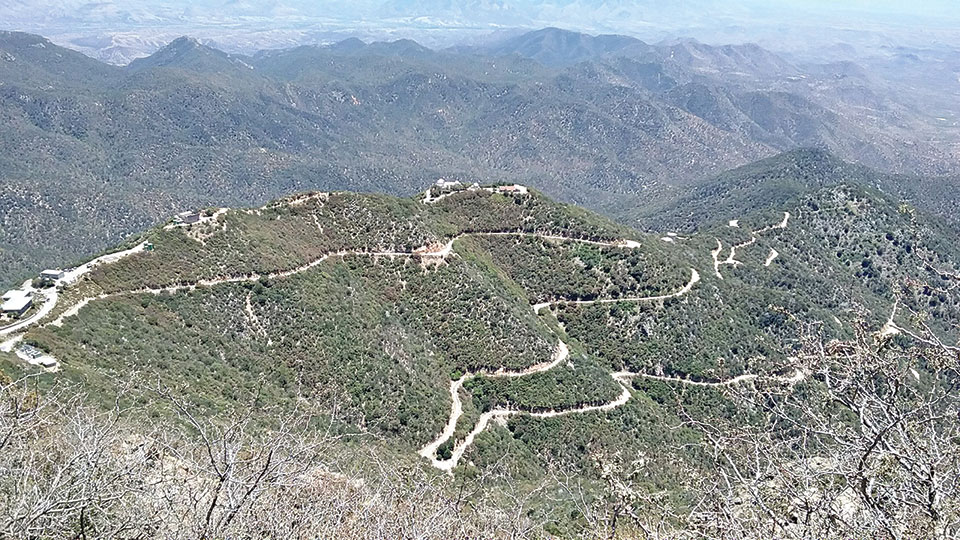
 Joyce Shumate
Joyce Shumate
On May 17 the Quail Creek Educational TRIPS Committee planned a wonderful full day of learning and observing. The weather could not have been better. Our tour began at the Visitors Center that features several displays and exhibits on astronomy and astrophysics, natural science and cultural history. An informative series of videos prepared us for what we would be experiencing up on the mountain. From there, a school bus took us up the winding road to Mt. Hopkins; the second highest peak (by a slim amount) in the Santa Rita Mountains.
Our first stop we received additional educational information about the various telescopes located at this point. Next stop was almost at the top, where we stopped to have our picnic lunch. We transfer to two smaller vehicles to get to the top. The final ascent is at a 23 degree grade, before reaching the summit.
The view from the summit is amazing. You can go 360° around the housing of the giant telescope. We were told that on a clear day you can see 13 different mountain ranges. There are map signs around to help you identify places and other things of interest.
Our guide Norm was very knowledgeable and answered many technical questions. We went inside to see this amazing telescope. The trip lasted until 2:00 p.m.
Whipple Observatory is in partnership with Smithsonian Institute and the University of Arizona.
There is a nice nature trail around the visitor center that you can explore and will see four telescopes to observe gamma rays emitted from and in space. What a surprise to see your own reflection in a mirrored telescope.
I’ve done this tour twice and am continually amazed at the views from the summit and the climb through the scenic Santa Ritas.
